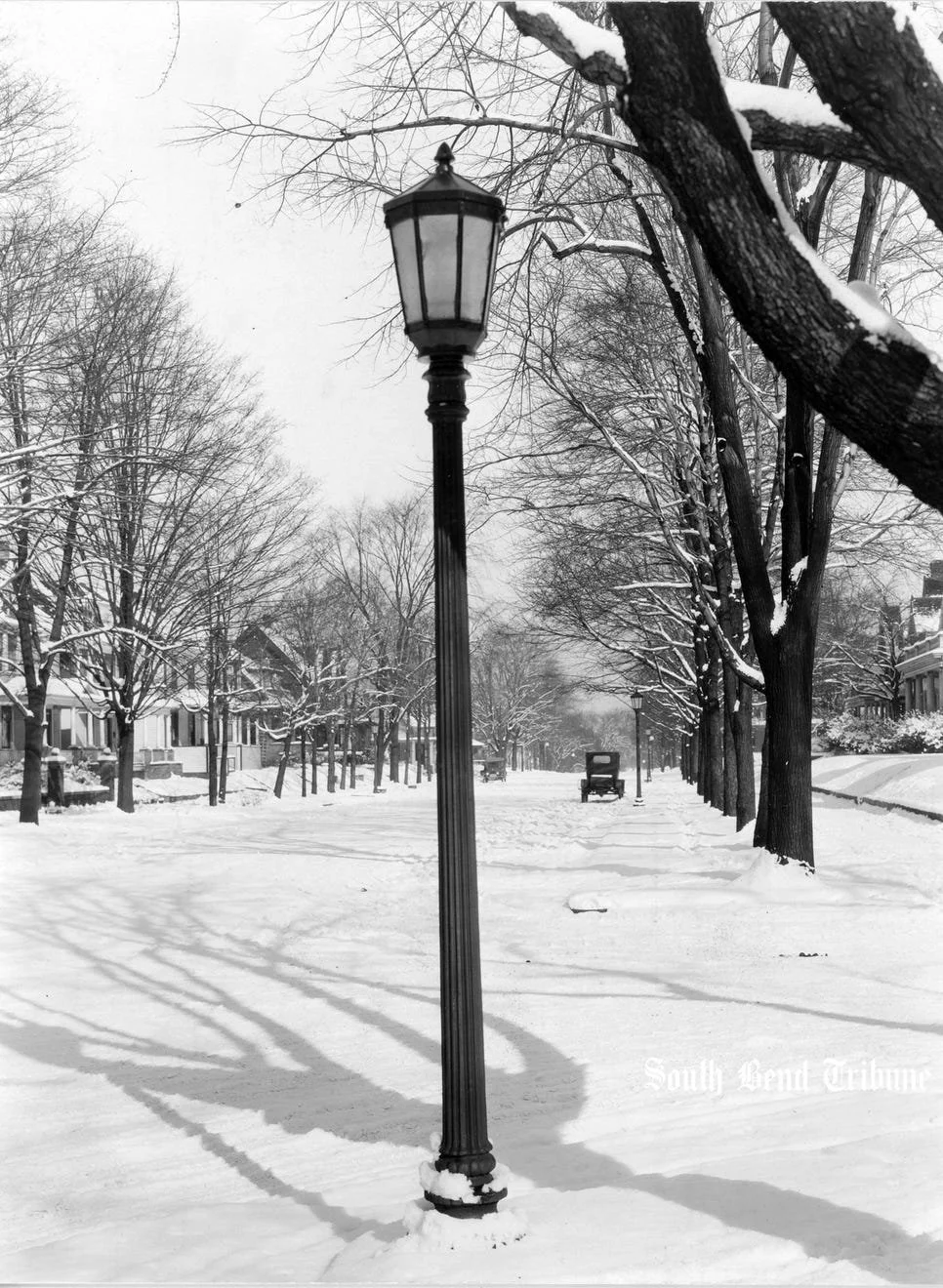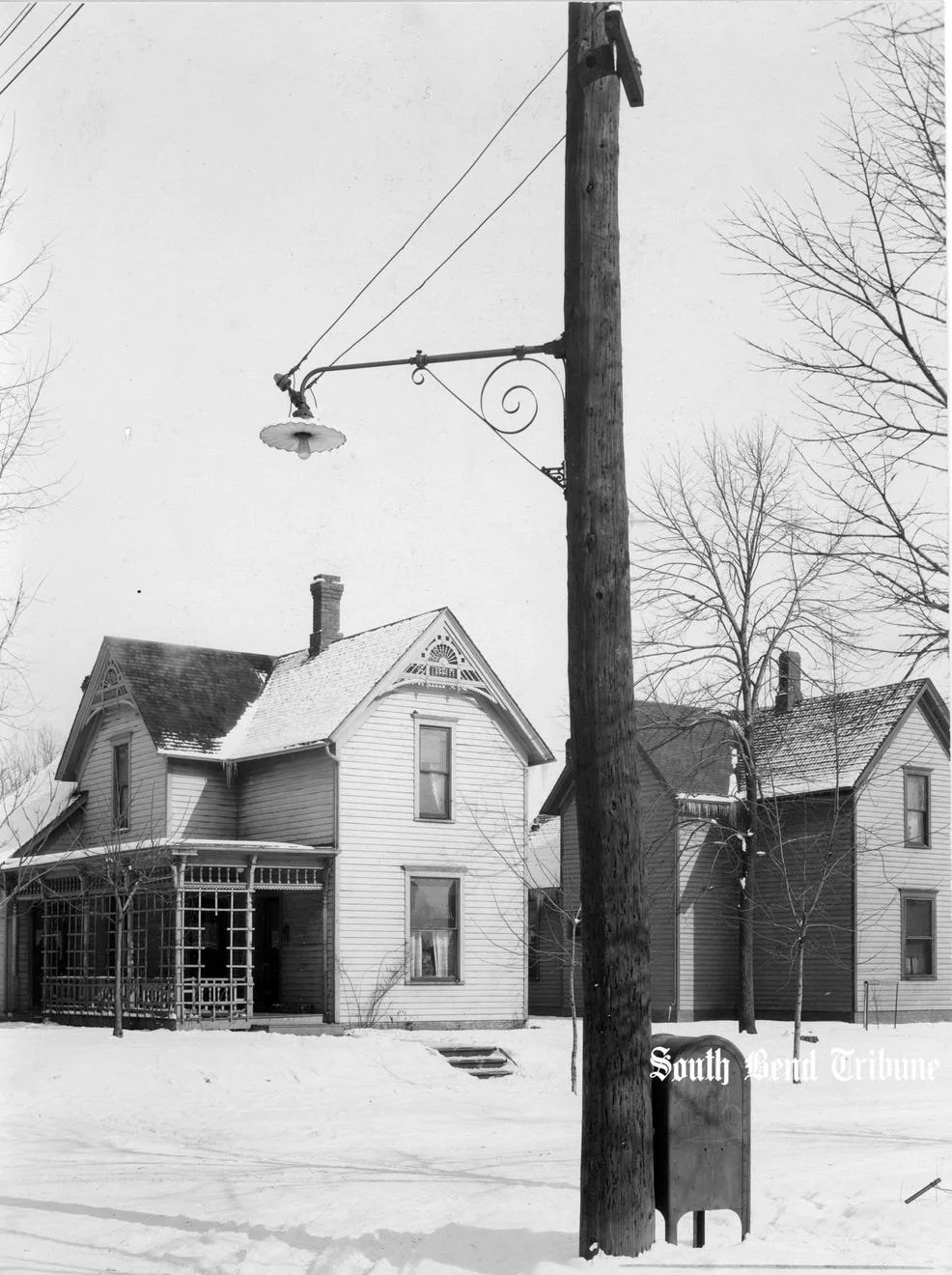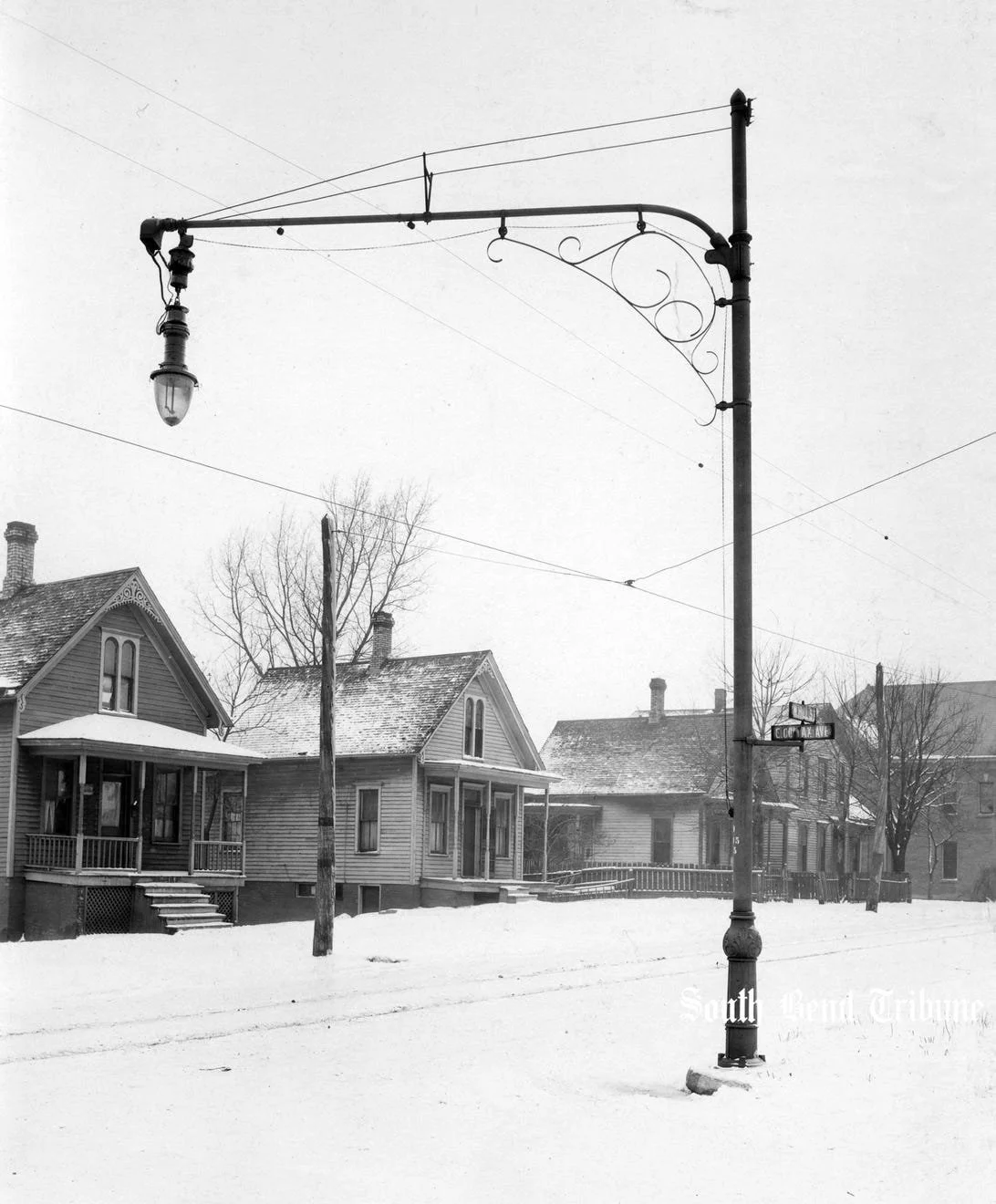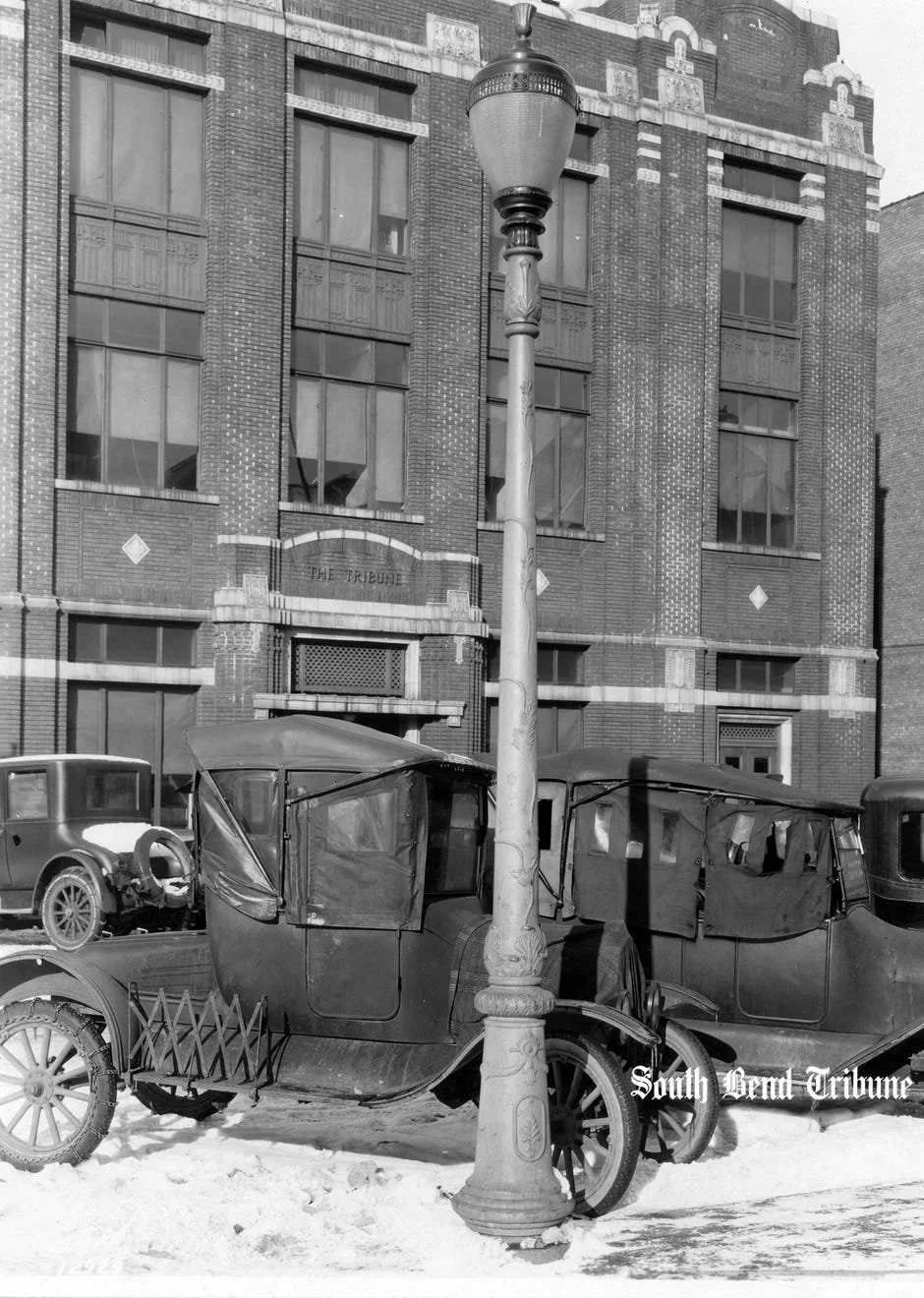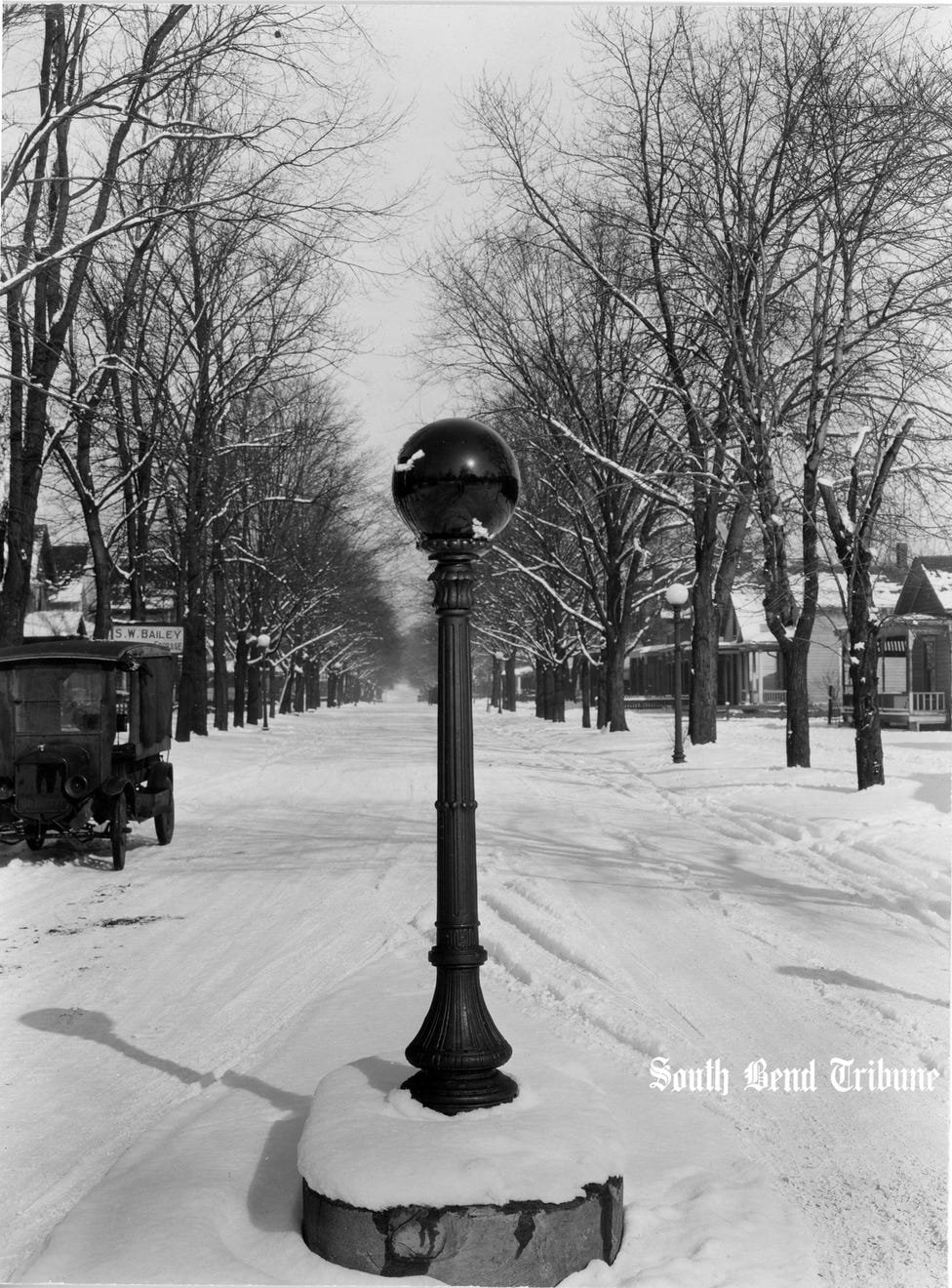Beauty in the Public Way
The George Cutter Company of South Bend was once the largest municipal street-light manufacturer in the United States. Their lamps lined cities across the country with warm light and cast ornamental detail. Beauty in the public way.
Our cities comprise countless bits of ordinary infrastructure that once carried the imprint of craft and shared imagination. Today, it is not so. Simon Sarris said this well in his essay That which is unique, breaks:
Some years ago a nearby city built a plaza. It is wholly unremarkable: No one lingers there, no one brings food or a book. Children do not play there. If a public space is never used, why did we make it? The question returns an echo: If we are richer today, why are we not routinely surpassing the shared spaces we were able to create one hundred years ago?
What did a person photographing such a park imagine about the beauty of our parks, one hundred years hence? What do we imagine about the beauty of our public spaces one hundred years from today? Maybe the echo is closer: Do we engage in the act of imagining public spaces at all? Somebody had to once, for this park was not an accident.
Love and effort create magnificent places. Genius inhabits them. People go to them because they know such places and landscapes offer consolation of the soul, and the soul is not fooled by substitutes. We let those places turn our moods, we want them to, they do so easily. Today it is not always hard to find such places, but why is it difficult to make new ones?
But when we consider street-lights specifically, we notice that the loss may have less to do with a diminished desire for beauty than with an overwhelming desire for efficiency. Rust Belt Kid said this well on X:
Mass production has really done a toll on intricate metal work.
Used to be $5 bucks for standard, $10 for intricate
Now its $1 for cheap standard, $5 American standard, $20 bucks for intricate
A lot harder to justify
In choice A, both quotes came from your town
In choice B, one comes from China (takes 3 days), one comes from America (3 weeks) and the final option still comes from America but takes 3 months
And yet, whatever the reason, we deserve—nay, need—better.
When we talk about South Bend’s industrial heritage, it’s easy to gesture toward Studebaker, Bendix, and Oliver and miss the smaller concerns whose work traveled just as far. The George Cutter Company was one such concern.
George M. Cutter was born in Boston in 1853 and by 1881 was working under Alexander Graham Bell, sent abroad to help install the first telephone systems in Russia. A decade later he founded his own firm and began designing lighting hardware. After a fire destroyed his Chicago factory in 1904, he moved to South Bend, where he built a new plant at Notre Dame Avenue and Northside Boulevard. From there, the George Cutter Company became the largest municipal street-light manufacturer in the United States—known for their arc brackets, mast arms, and cast-iron standards that balanced engineering discipline with ornamental grace.
Their lamps stood in Chicago, New York, Seattle, and of course South Bend, each carrying the inscription George Cutter Company, South Bend, Ind. at its base.
Almost all of these fixtures are gone—the only remains I know of in South Bend are the replicas dotting the Michigan Street Bridge. Across nearly all of our ordinary infrastructure, beauty has become optional.
These photographs remind us of another way.









